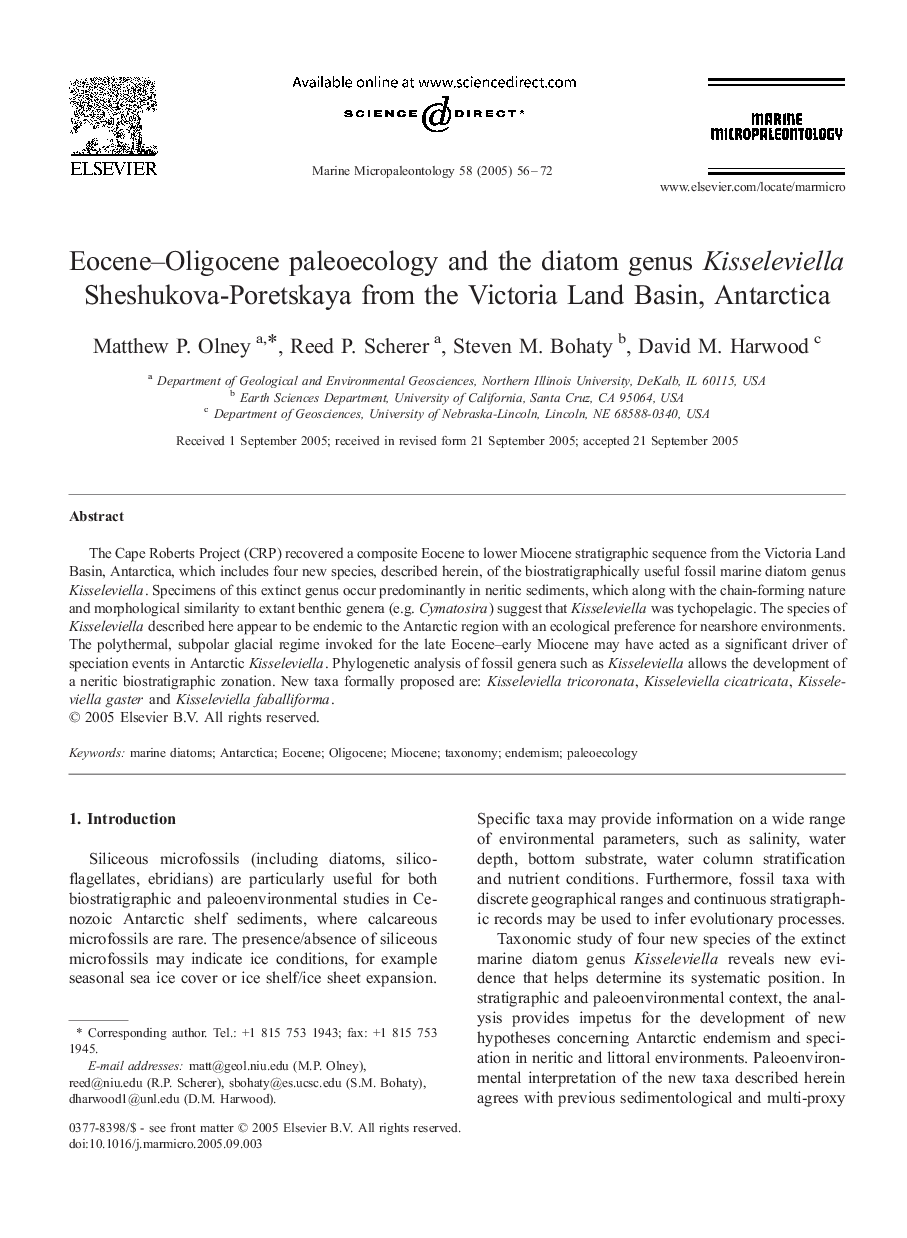| Article ID | Journal | Published Year | Pages | File Type |
|---|---|---|---|---|
| 9539552 | Marine Micropaleontology | 2005 | 17 Pages |
Abstract
The Cape Roberts Project (CRP) recovered a composite Eocene to lower Miocene stratigraphic sequence from the Victoria Land Basin, Antarctica, which includes four new species, described herein, of the biostratigraphically useful fossil marine diatom genus Kisseleviella. Specimens of this extinct genus occur predominantly in neritic sediments, which along with the chain-forming nature and morphological similarity to extant benthic genera (e.g. Cymatosira) suggest that Kisseleviella was tychopelagic. The species of Kisseleviella described here appear to be endemic to the Antarctic region with an ecological preference for nearshore environments. The polythermal, subpolar glacial regime invoked for the late Eocene-early Miocene may have acted as a significant driver of speciation events in Antarctic Kisseleviella. Phylogenetic analysis of fossil genera such as Kisseleviella allows the development of a neritic biostratigraphic zonation. New taxa formally proposed are: Kisseleviella tricoronata, Kisseleviella cicatricata, Kisseleviella gaster and Kisseleviella faballiforma.
Related Topics
Physical Sciences and Engineering
Earth and Planetary Sciences
Palaeontology
Authors
Matthew P. Olney, Reed P. Scherer, Steven M. Bohaty, David M. Harwood,
